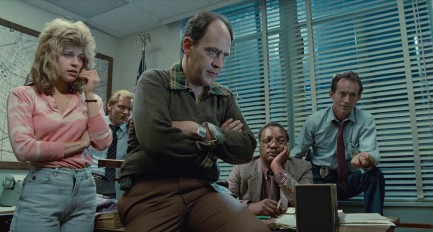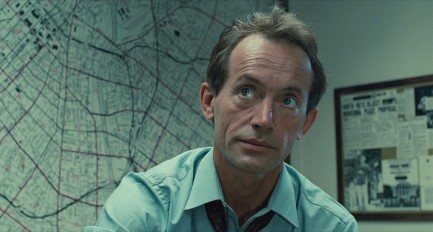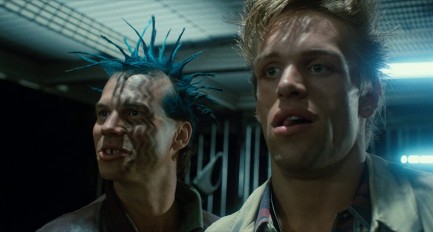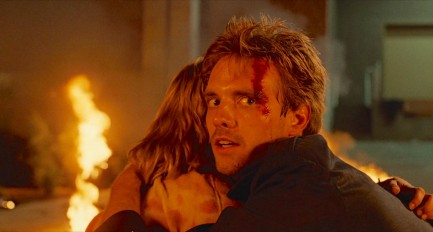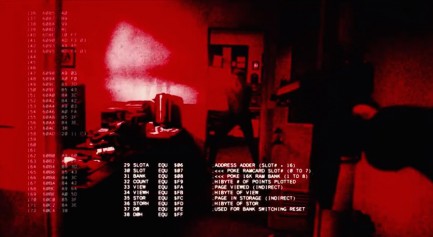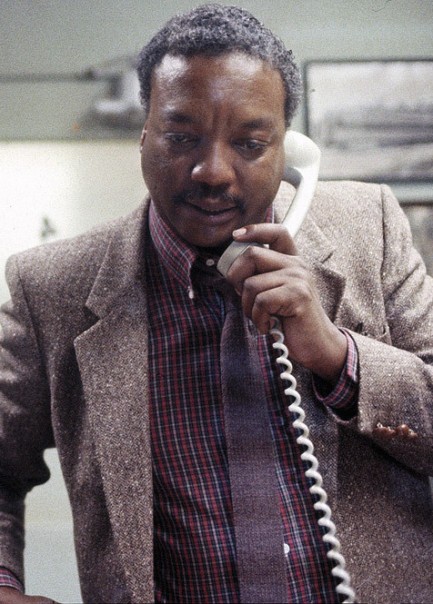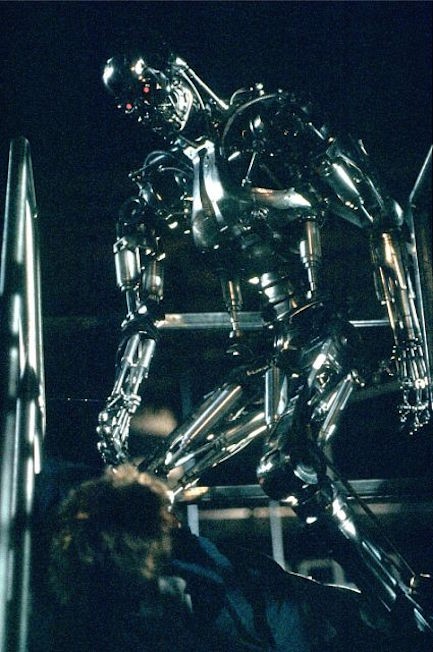 Rita Hayworthová was worth the wait. 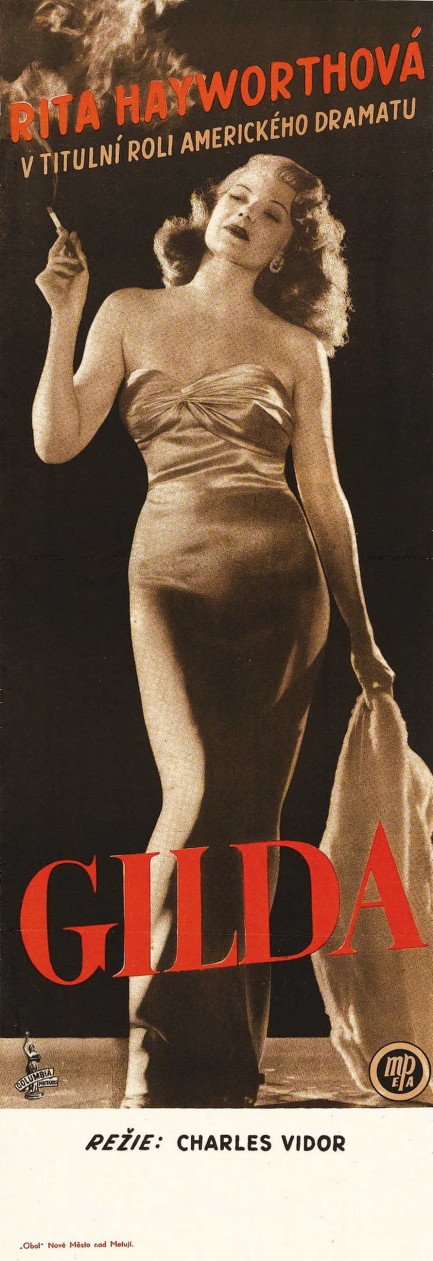
This Czech poster for the film noir classic Gilda isn't substantially different from the U.S. promo, but the Czech text makes it worth a share. Rita Hayworthová? Love it. “V titulní roli americkeho dramatu”? That's easy to figure out—“In the title role of the American drama.” The online translator agreed. There's no Czech release date for this, but we can make a guess. It was released in early 1946, played at the Cannes Film Festival in September of that year, and began to reach secondary European markets in early 1947. So it probably reached then-Czechoslovakia in mid-1947. But whenever it showed up, Hayworthová made it a mandatory night at the movies.
 This frolic has been sponsored by Off! bug repellent and Nasonex hay fever tablets. 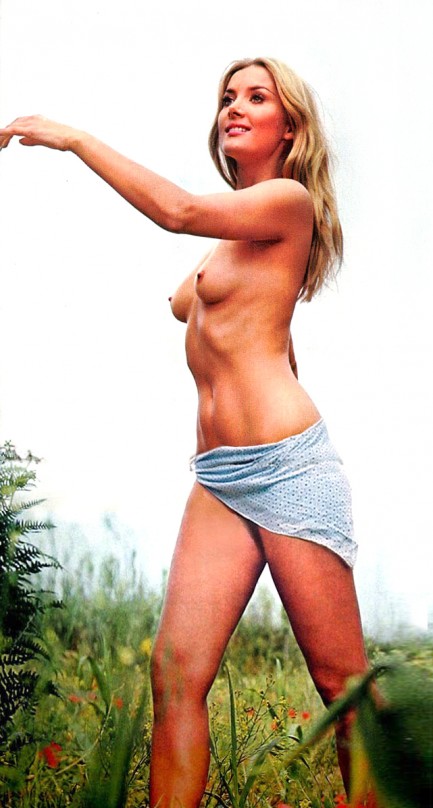
In this centerfold image from the Belgian magazine Ciné-Revue published in September 1972, Barbara Bouchet finds herself in a field of wildflowers and high grasses, and does what comes naturally—sneezes like a maniac until the medication kicks in. Then she frolics, and what a lovely frolic it is. We've featured Bouchet before, which means you already know she's a famously beautiful model-turned-actress who appeared in films like Non si sevizia un paperino, aka Don't Torture a Duckling, Gangs of New York, Casino Royale, and television's Star Trek. Also—and we didn't mention this the other times we wrote about her—she's another celeb who benefitted from a name change. She was born in 1943 in Sudentenland, a part of Czechoslovakia that was occupied by Germany at the time, and grew up as Bärbel Gutscher. That name simply doesn't roll off the tongue, so when she went to Hollywood she chose something that sounded French and the rest is history. These days she lives in Rome, where she still occasionally acts, though probably does a bit less frolicking. See a couple more shots of her here and here.
 Hello, police? I'd like to report an explosive orgasm. 
Earlier this week in Germany, outside the town of Passau on the Austrian-Czech border, a jogger was running through the forest and came across a bag that seemed to have items inside. Perhaps hoping to find something useful or valuable, the jogger investigated this discarded sack and saw that it contained what looked like a World War II-era hand grenade. Though the war has been over for seventy-plus years, live grenades are still found in the forests of Europe, and everyone there knows that, so it's no surprise the jogger called the police.
Eventually a German bomb squad slogged out into the woods to investigate, and noticed that the bag also contained a tube of sex lubricant called Aquaglide and some condoms. The anti-climax must have been tremendous.
“Horst, your camera feed is bad. What the hell am I seeing there? Is that a tube of accelerant? Something explosive? Over.”
“No sir, it's lube. Over.”
“It's what?”
“Sex lube, sir. Sex lube for the cockenspiel. Over.”
At that point the bomb squad deduced that the grenade was actually a rubber sex toy. But looking at it, we're unsure how it's meant to be used. We poked around online, in the process 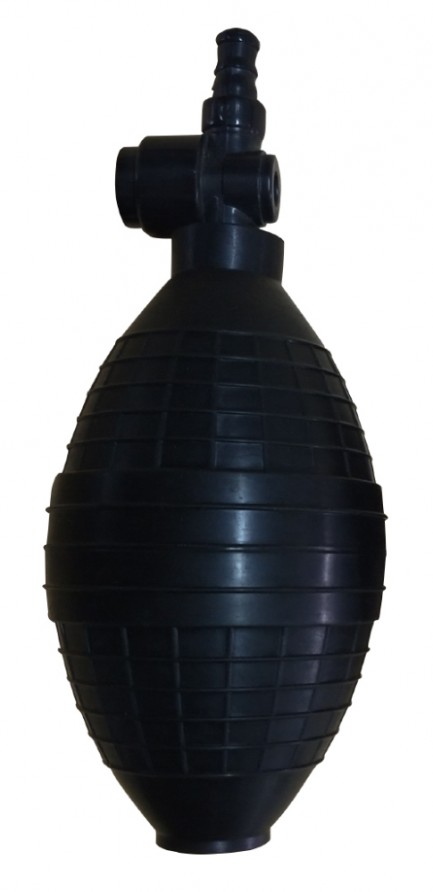 turning our browser history into a sexual free-for-all, and finally found the item you see in the second photo. But we'd be lying if we said that cleared things up for us. It's a hand pump of some sort, or possibly some unisex inflatable insertable, but considering the Passau photo also shows what looks like a power brick and a usb cable, we remain mystified. We're calling the German discovery the grenade of ecstasy. turning our browser history into a sexual free-for-all, and finally found the item you see in the second photo. But we'd be lying if we said that cleared things up for us. It's a hand pump of some sort, or possibly some unisex inflatable insertable, but considering the Passau photo also shows what looks like a power brick and a usb cable, we remain mystified. We're calling the German discovery the grenade of ecstasy.
Even though we don't know exactly how the grenade of ecstasy was meant to be used, we know what it's being used for now. The Passau bomb squad is taking turns pranking each other with it. Bomb squads have a lot of down time. The grenade has already turned up at the bottom of someone's bowl of kartoffelsuppe. And for sure it's been delivered by a bomb disposal robot to someone on the toilet. But the absolute best was throwing it into the dayroom while screaming, “Grenate! Alles runter! Alles runter!” followed by someone charging in, throwing himself on top of it, and ripping a massive pilsener fart. You gotta love those bomb guys.
Interestingly, because bomb squads are used to facing death, the Passau guys never cleaned the grenade of ecstasy. It's still got forest mulch and dried human fluids all over it. That's what makes the kartoffelsuppe gag funny. But bomb squads tire quickly of even the most thrilling diversions, and eventually they'll discard their new toy just like the person who dumped it in the woods. At which point they'll turn their attention to the Aquaglide. We recommend smearing it on someone's bomb disposal tools. That'll make the next bomb emergency dangerous and slippery. Pure fun for all involved.
 A textbook case of pianist envy leads to serious trouble. 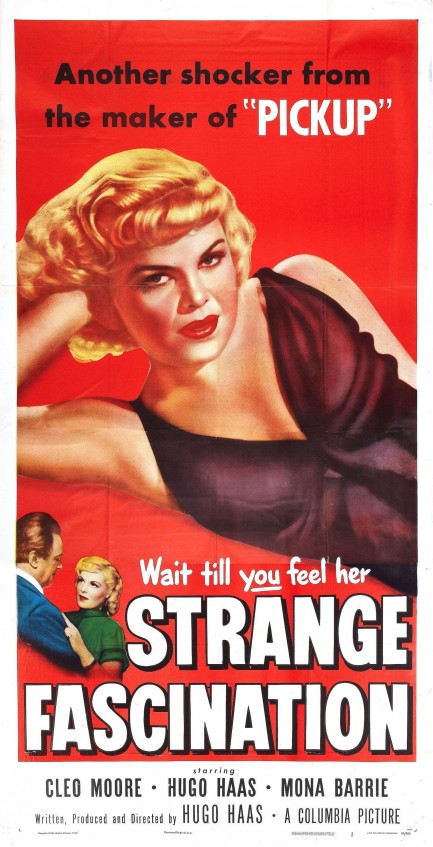
This poster was made for Strange Fascination, a film put together by triple threat Hugo Haas, who wrote the screenplay, directed, and starred. It premiered this month in 1952. Plotwise a rich widow traveling in Europe meets a brilliant pianist who wants to leave the continent to get away from its “recent misfortunes.” She sponsors him and brings him to New York City, where he has immediate success, but his head is soon turned by platinum blonde showgirl Cleo Moore. She's got show business ambitions but no avenues, so she hitches herself to the rising pianist and proceeds to make his career go limp.
Hugo Haas headlined scores of movies and accumulated more than forty credits directing and writing, so Strange Fascination was no vanity project. In fact we suspect it was uniquely important to him because of its autobiographical elements. For instance, like the pianist he plays Haas left eastern Europe—Brno, Austria-Hungary, which is now part of the Czech Republic—and became respected in his chosen industry. And his given name was Pavel Haas, while his lead character here is named Paul, the Anglicization of Pavel.
In Strange Fascination Haas crafted a solid movie but don't let the online reviews fool you—it isn't film noir. These days any movie that's mid-century, black and white, and dramatic gets the noir stamp on crowd sourced websites like IMDB and Wikipedia. Strange Fascination contains bits of noir iconography, but films of the period have no choice about that—after all, rain falls even in musicals and neon signs occur even in comedies. Strange Fascination is really a straight melodrama. Go into this little b-movie with that expectation and it may prove satisfying.
 So when I sign this I'm giving you permission to turn my life into an unrelenting hell? So when I sign this I'm giving you permission to turn my life into an unrelenting hell?
 Without her it's just a gaudy mauve bedroom. 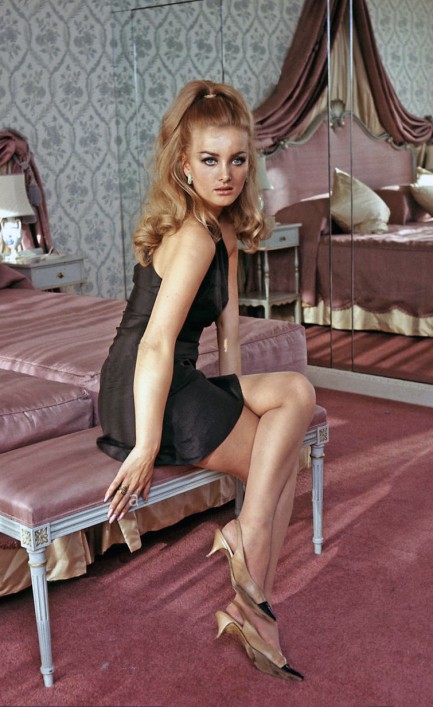
Above, a really lovely shot of Barbara Bouchet, considered one of the great beauties of her era, chilling in a hotel room. She was born today in 1943 in the Sudetenland, then part of Germany, today part of the Czech Republic. We've featured her before and all those posts are worth a look, here, here, and here.
 The future's so bleak he has to wear shades. 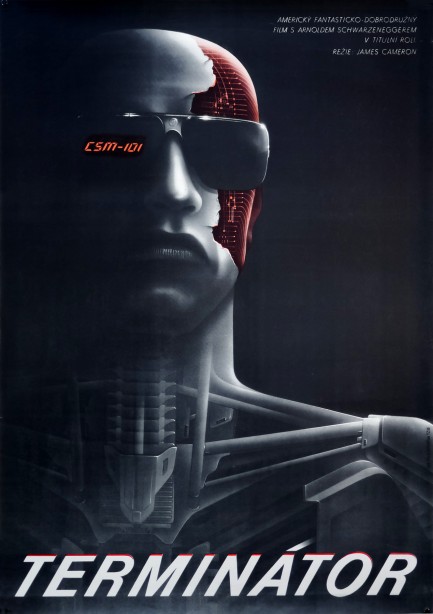
Above, a poster for the game changing science fiction adventure The Terminator painted for the Czech (then Czechoslovakian) market by Milan Pecak. The fading effect at the bottom of the art is the way Pecak painted it, rather than the result of a bad scan or photo. This movie may look a bit clunky to modern viewers, but so will Avengers: Infinity War in twenty years. Along with stunners like Alien, Blade Runner, and others, The Terminator changed the idea of what cinematic science fiction could be. It premiered in the U.S. in 1984 and eventually arrived in Czechoslovakia as Terminátor today in 1990.
 Raquel, rifles and redesigned money. 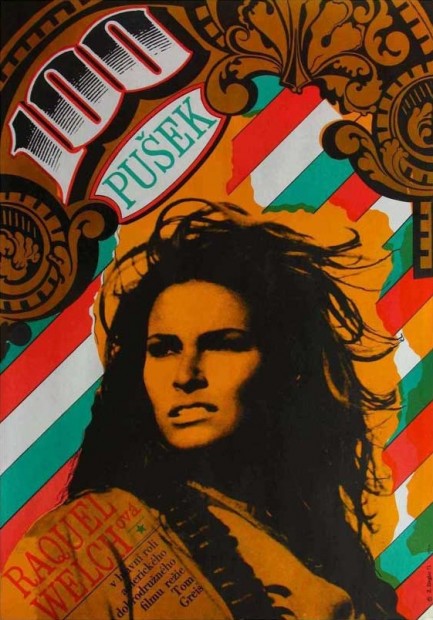
Above, a fantastic poster for the 1969 western 100 Rifles with Raquel Welch superimposed over a stylized U.S. currency background. It was made for the film’s 1971 stint in what was then Czechoslovakia. Amazingly, we saw it listed on a foreign poster specialty site for $275.00, and then saw the exact same piece on a big retail site for $13.99. The lesson there is to shop wisely. See our recent write-up on 100 Rifles here.
 I’d rather go naked and wear fur. 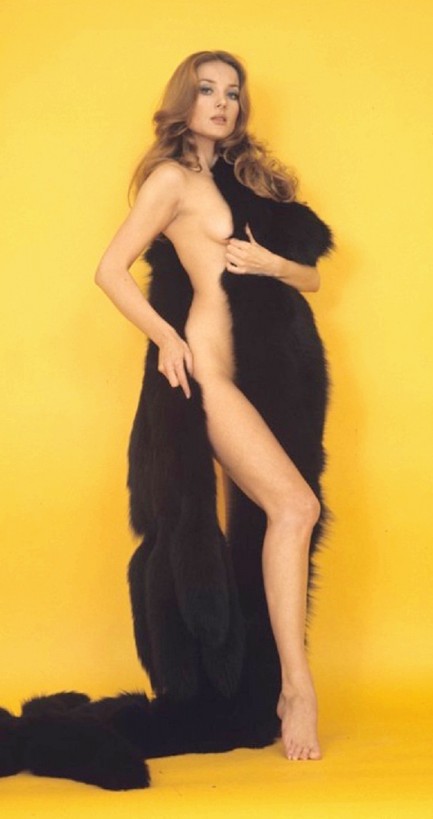
German-Czech actress Barbara Bouchet, from a July 1976 issue of the Belgian film mag Ciné-Revue.
 Here comes your nineteenth nervous breakdown. 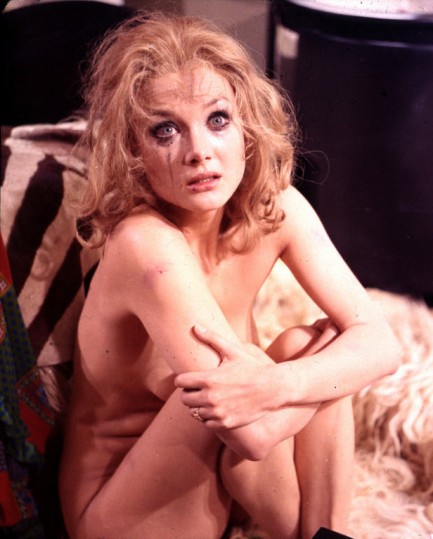
German-Czech actress Barbara Bouchet as Kitty Wildenbrück in the Italian giallo classic, La dama rossa uccide sette volte, aka The Red Queen Kills Seven Times, aka Blood Feast, aka several other titles,1972.
 The streets of San Francisco. 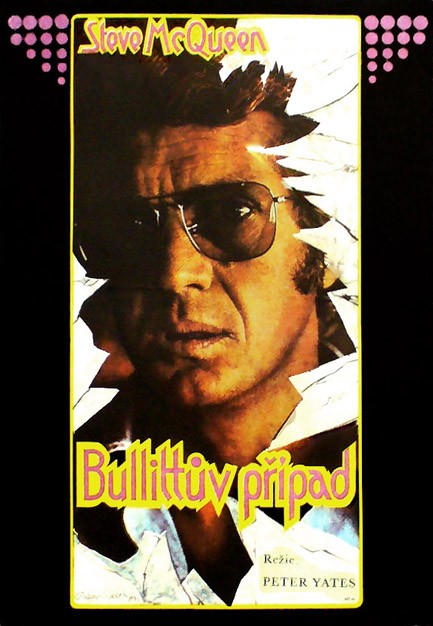 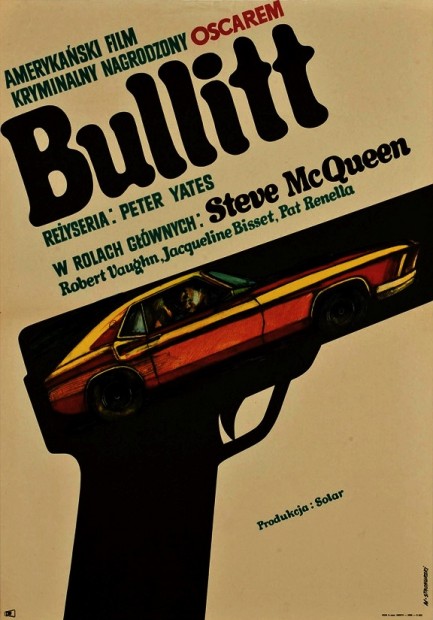
Czech and Polish posters for the 1968 detective thriller Bullitt, which starred the incomparable Steve McQueen and featured an urban San Francisco car chase, one of the great sequences of its kind in cinema history.
|
 |

The headlines that mattered yesteryear.
1939—Holiday Records Strange Fruit
American blues and jazz singer Billie Holiday records "Strange Fruit", which is considered to be the first civil rights song. It began as a poem written by Abel Meeropol, which he later set to music and performed live with his wife Laura Duncan. The song became a Holiday standard immediately after she recorded it, and it remains one of the most highly regarded pieces of music in American history. 1927—Mae West Sentenced to Jail
American actress and playwright Mae West is sentenced to ten days in jail for obscenity for the content of her play Sex. The trial occurred even though the play had run for a year and had been seen by 325,000 people. However West's considerable popularity, already based on her risque image, only increased due to the controversy. 1971—Manson Sentenced to Death
In the U.S, cult leader Charles Manson is sentenced to death for inciting the murders of Sharon Tate and several other people. Three accomplices, who had actually done the killing, were also sentenced to death, but the state of California abolished capital punishment in 1972 and neither they nor Manson were ever actually executed. 1923—Yankee Stadium Opens
In New York City, Yankee Stadium, home of Major League Baseball's New York Yankees, opens with the Yankees beating their eternal rivals the Boston Red Sox 4 to 1. The stadium, which is nicknamed The House that Ruth Built, sees the Yankees become the most successful franchise in baseball history. It is eventually replaced by a new Yankee Stadium and closes in September 2008.
|

|
|

It's easy. We have an uploader that makes it a snap. Use it to submit your art, text, header, and subhead. Your post can be funny, serious, or anything in between, as long as it's vintage pulp. You'll get a byline and experience the fleeting pride of free authorship. We'll edit your post for typos, but the rest is up to you. Click here to give us your best shot.

|
|






 turning our browser history into a sexual free-for-all, and finally found the item you see in the second photo. But we'd be lying if we said that cleared things up for us. It's a hand pump of some sort, or possibly some unisex inflatable insertable, but considering the Passau photo also shows what looks like a power brick and a usb cable, we remain mystified. We're calling the German discovery the grenade of ecstasy.
turning our browser history into a sexual free-for-all, and finally found the item you see in the second photo. But we'd be lying if we said that cleared things up for us. It's a hand pump of some sort, or possibly some unisex inflatable insertable, but considering the Passau photo also shows what looks like a power brick and a usb cable, we remain mystified. We're calling the German discovery the grenade of ecstasy.

 So when I sign this I'm giving you permission to turn my life into an unrelenting hell?
So when I sign this I'm giving you permission to turn my life into an unrelenting hell?



